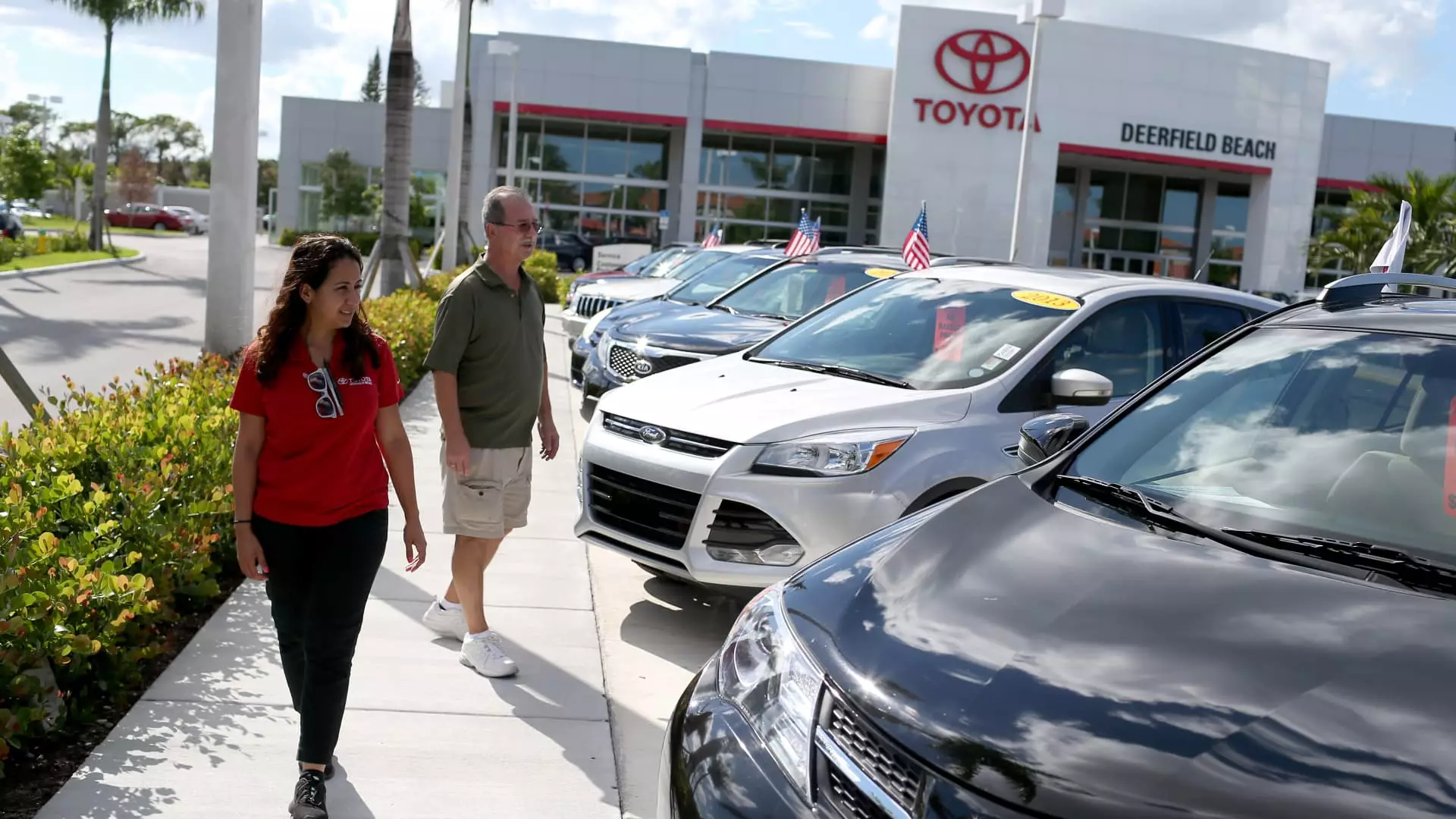In an era where ownership often symbolizes the American Dream, the imposition of President Trump’s controversial 25% tariffs on imported vehicles marks a dark chapter for consumers and the entire automotive sector. Newly released analyses from Cox Automotive predict an alarming surge in vehicle prices which could wholly reshape the way Americans view car ownership. Forecasts indicate price increases of $6,000 for imported vehicles and $3,600 for domestically assembled cars due to these tariffs, providing a stark contrast to the seemingly overshadowed fabric of the economy. These figures beg the question: why are we allowing regulatory measures that hurt the very consumers they are supposed to protect?
The reality is grim. The tariffs, which began to take effect recently, are not just numbers on a page—they will directly impact families looking for affordable ways to commute. High prices will likely shift the average consumer’s perspective on vehicle ownership, leading to increased financial pressure. This price escalation may potentially close the door on the middle-class dream of owning a new car, further widening the economic gap between wealthier consumers who can absorb the heightened costs and those struggling to make ends meet.
The Unintended Consequences of Protectionism
While the superficial aim of these tariffs is to bolster domestic manufacturing, the underlying truth is more convoluted. For every intended job protected in Detroit, countless others stand at risk in showrooms spanning across the nation. Automakers like Ford and Stellantis may announce enticing temporary deals, but these are merely band-aids on a festering wound. The strategy of protectionism fundamentally blinds us to the golden rule of market dynamics: price fluctuates based on demand, and supply chains are intricate webs of international cooperation that cannot be severed without overwhelming repercussions.
The shrinking production capacities and increasing consumer demand for imported vehicles draw stark attention to the fact that tariffs are more hindrance than help. The effects ripple down the entire supply chain, squeezing out smaller manufacturers and pushing everyday citizens toward financial despair. Such economic isolationism may very well lead to a long-term decline in automotive production and innovation, impacting the industry’s viability in a modern, globalized world.
Stratospheric Used Vehicle Prices
Consider the used vehicle market—a significant area of concern as the entire automotive landscape shifts under the weight of these tariffs. Cox Automotive now forecasts an increase in wholesale prices for used vehicles by as much as 2.8% by year-end, a sharp contrast to previous estimates that seemed almost stable. In a market already fraught with instability and price hikes from the aftermath of the coronavirus pandemic, these further increases are worrisome for the average individual seeking reliable transportation.
Ryan Rohrman, CEO of Rohrman Automotive Group, correlates current volatility with the chaotic periods experienced during COVID-19. This comparison resounds in the corridors of used car dealerships, where inventory shortages trigger auction skies and push prices further up the ladder. It’s a reality that evokes anxiety about the sustainability of the market—a sentiment that risks shaking consumer confidence to its very core. Individuals who relied heavily on used vehicles now find affordability slipping out of their grasp at breakneck speed.
The Ripple Effect on Sales and Production
As American consumers brace for price hikes, the retaliatory measures taken by automotive manufacturers to counteract tariffs are already apparent. Several automakers, primarily those with significant domestic bases of operation, are poised to reduce production in anticipation of dwindling demand. The irony here is thick: the tariffs that were supposed to encourage local production may instead crush it under the weight of surging prices and ultimately lower sales.
With an unsteady truck market plagued by regulatory uncertainty and economic strain, consumers may effectively delay vehicle purchases altogether. This cause-and-effect cycle holds grave implications not just for future sales figures but also for the suppliers and support industries that thrive on consistent consumer purchasing patterns. The shadow of these tariffs compels the market to reduce inventory levels further, exacerbating existing issues and creating a downward spiral of decreased consumer choice.
Each new barrier placed in the path of economic growth disjointedly echoes a troubling history. Consumers in economic distress should not endure the heavy-handedness of misguided policies masquerading as protective measures. The danger lies not in the clarity of economic objectives but in the collective belief that trade barriers can solve what is a complex issue built on international foundations.
Ultimately, the ramifications of Trump’s auto tariffs resonate far beyond mere dollar figures. They reflect deeper ideological conflicts in America—a reminder that the policies framed in isolationism can bind the hands of innovation and ultimately deny the promise of prosperity to future generations.

